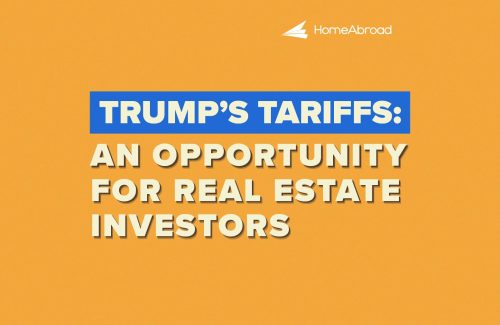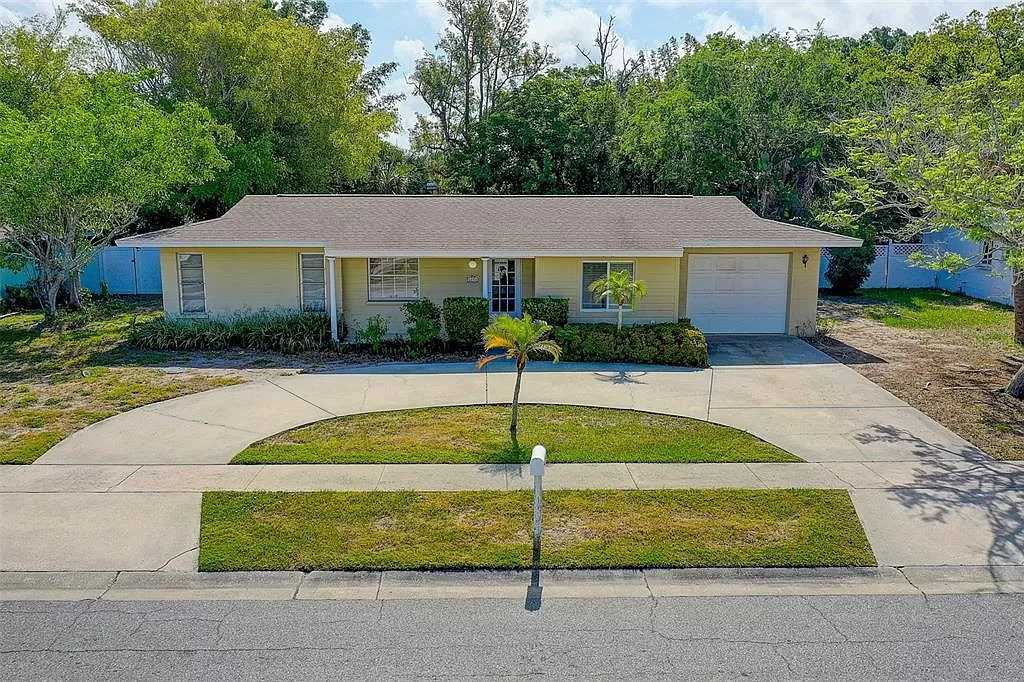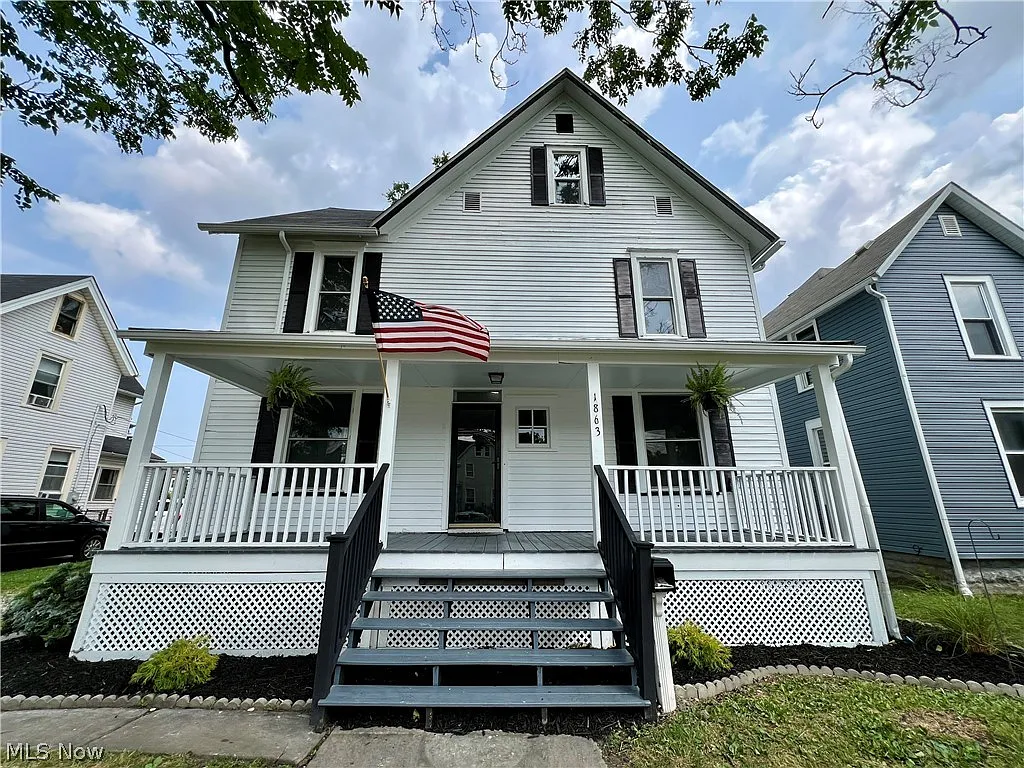Editorial Integrity
Making informed real estate decisions starts with having the right knowledge. At HomeAbroad, we offer US mortgage products for foreign nationals & investors and have a network of 500+ expert HomeAbroad real estate agents to provide the expertise you need. Our content is written by licensed mortgage experts and seasoned real estate agents who share insights from their experience, helping thousands like you. Our strict editorial process ensures you receive reliable and accurate information.
When tariffs dominate the news, most headlines highlight trade wars, rising costs, and economic uncertainty. However, behind the headlines of Trump’s recent tariff announcement on April 2, 2025, there’s an unexpected bright spot quietly emerging for real estate investors.
While the media focuses on shaky stock markets and tense international relations, real estate investors understand disruptions often bring hidden opportunities.
Right now, US real estate is becoming more attractive, especially for those ready to invest strategically during this economic shift.
Here’s why Trump’s tariffs deserve your attention and how they could lead to profitable opportunities in the US real estate market.
Table of Contents
What’s Actually Happening: Trump’s 2025 Tariff, Treasury Yields, and Market Signals
When tariffs make headlines, most investors brace for stock market dips, rising costs, and global uncertainty. That’s exactly what followed President Trump’s latest move, including a universal 10% tariff on all imported goods and a substantial 125% tariff on Chinese imports.
The announcement of these tariffs led to significant reactions across financial markets:
Stock Market Volatility
Major indices experienced sharp declines, with the S&P 500 and Dow Jones Industrial Average (DJIA) experiencing notable significant declines in recent times, shortly after the tariff announcement, reflecting investor concerns over potential economic slowdowns.
Bond Market Fluctuations:
Bond markets experienced significant volatility following President Trump’s recent tariff announcements. Initially, investors rushed to the safety of US Treasury bonds, driving yields down amid growing uncertainty. However, this drop was short-lived. As concerns about rising inflation grew and liquidity conditions changed, Treasury yields rebounded.
Experts now anticipate that continued economic disruptions and inflationary pressures resulting from the tariffs may eventually prompt the Federal Reserve to lower interest rates in order to stimulate growth. If this occurs, Treasury yields could decline over the medium term.
Since mortgage rates are closely tied to Treasury yields, any future rate cuts by the Fed would likely result in more attractive borrowing conditions. This would enhance housing affordability and create timely opportunities for real estate investors.
Following the initial drop in yields, the average 30-year fixed mortgage rate fell to its lowest point since October. This decline led to a 20% increase in mortgage applications, reflecting renewed interest from both homebuyers and investors.
In short, Trump’s tariffs might have rattled financial markets, but they’ve also quietly opened a window of opportunity for strategic real estate investors ready to act swiftly.
6 Ways Trump’s Tariffs Are Creating Opportunities for US Real Estate Investors
Despite the uncertainties introduced by recent tariff policies, it also creates an opportunity for savvy real estate investors to explore promising opportunities in the US real estate market.
Here’s how investors can strategically benefit:
1. Demand for Industrial and Commercial Property Are Heating Up
Recent CBRE data shows US industrial leasing activity has reached record highs. This growth is largely fueled by companies reshoring their supply chains to avoid tariffs, increasing demand for domestic logistics, warehousing, and distribution space.
Real estate investors in the US can take advantage of this surge by targeting income-generating commercial real estate in key trade hubs, inland ports, and secondary cities where supply is still catching up to the demand.
2. Construction Costs Will Elevate Existing Home Values
According to Yahoo Finance, tariffs on imported materials such as steel and aluminum have driven up construction costs significantly. The Hispanic Construction Council noted that similar tariffs in 2018 raised building material prices by 10 to 15 percent, adding $1 billion in construction costs in a single year.
With the cost of building expected to rise, fewer new homes are being developed, which tightens housing supply. For investors focusing on existing homes, this dynamic creates an opportunity to benefit from increased market values and stronger yields.
3. Market-Ready Properties Are Gaining Value
As rebuilding costs climb, existing homes become more valuable. In areas where construction is limited or delayed due to material pricing, properties already on the market often see an uptick in valuation.
For US real estate investors – global or local, this makes a smart time to purchase in high-demand, supply-constrained markets before competition and prices intensify further.
4. Renovation-Driven Projects Are on the Rise
The growing expense of new construction is turning attention toward renovation and remodeling. Properties that might have been overlooked before, such as aging residential units or vacant commercial buildings, are being transformed into updated, high-demand spaces.
Investors who focus on upgrading existing assets rather than building from the ground up can often realize strong returns with lower capital outlay.
5. Multifamily Rental Market Is Gaining Ground
With homeownership becoming less affordable due to construction inflation and rate volatility, more residents are turning to rentals. This is increasing demand for multifamily housing across both urban cores and growth suburbs.
For global investors, multifamily properties offer a reliable combination of steady cash flow and long-term equity growth, particularly during economic cycles where stability and yield matter most.
6. US Real Estate Is the Safe Haven for Global Investors
Despite tariff tensions and shifting markets, the US continues to stand out as one of the world’s most resilient and safe real estate destinations. Ongoing economic uncertainty is driving international capital toward safer, income-generating assets.
Foreign buyers seeking portfolio diversification, asset stability, and dollar-denominated returns are increasingly targeting US properties. This is especially true for supply-limited, high-growth regions.
Final Takeaway: A Disruption Worth Paying Attention To
Trump’s tariffs may have rattled the stock market and sparked concerns in the global economy, but for real estate investors, they’ve also created an unexpected advantage.
From expected lower mortgage rates in the medium term and rising property values to growing demand in emerging markets, the current environment offers more than just a silver lining. For foreign nationals and US expats in particular, the US housing market continues to serve as a safe, appreciating asset class amid global uncertainty.
At HomeAbroad, we help global investors grab these opportunities with tailored mortgage solutions without the need for a US credit history.
The shifts brought on by these tariffs are already reshaping the market. Now, the question is – Will you move before the rest of the world catches on?




















